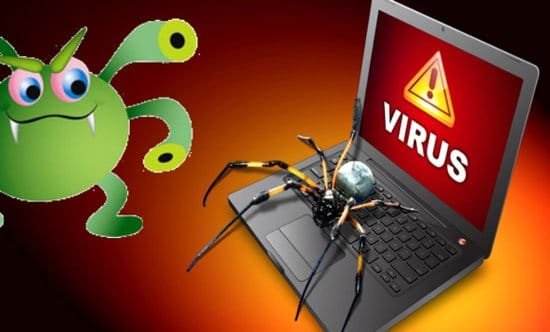The First Computer Virus Was Harmless
Evolution of The Computer Viruses......
A computer virus is a type of malicious software while executing it replicates itself. After the succeeding in replication, the affected areas said to be "infected" with the virus.
For the past 40 years, computer viruses have been plaguing individuals, organizations, and government agencies. By the passing time, these viruses have kept pace with the newest advances in technology.
| Computer Virus |
In the 1980s, the very first computer virus came into existence and was termed as the Creeper virus. The whole program was designed by information security professionals to block the copying done by itself. Later in the early 1990s, The Elk Cloner, the first personal computer virus was programmed by a high school student. It widens through a floppy disk that was attached to a game for the Apple DOS system. It was not intended to cause damage to our computer but was created as a practical joke.
The first virus to specifically attack PCs in 1986 and via the DOS system, it was recorded. The virus was created by two brothers from Pakistan, Basit Farooq Alvi and Amjad Farooq Alvi, known as The Brain. The Brain virus was essentially harmless.
Most computer viruses were harmless and annoyances. But in 1988, the first truly dangerous computer virus was released called Festering Hate virus, infecting Apple operating systems.
Later in 1991, a virus called Ghostball became the first threat to capture user information. After that in 1991, the first destructive virus was created. There was a hidden virus known as Michelangelo that only attacked computers on 6th March on Michelangelo's birthday.
There was a computer science student of the Philippines who produced the ILOVEYOU worm that infected millions of Microsoft operating systems within a few hours, in 2000. Then in 2003, the SQL Slammer crashed the internet within 15 minutes of its release. The first virus that attempted to make money by sending spam was the Fizzer virus.
 |
| Virus Detection |
Each year billions of dollars' worth of economic damaged by computer viruses.
About computer virus
A computer virus is a kind of malware that is attached to another program or document.
Which can replicate and spread after an initial execution on a target system
where human interaction is required. Most of the viruses are harmful and they
can destroy data and slow down the system resources, and log keystrokes. Most
of the viruses usually target the system that has running Microsoft Windows.
On the other hand, Macs enjoy a reputation as virus-proof super machines.
Don not
worry too much about what OS you choose, Windows or Macs because viruses just
are not a thing anymore. There are no new viruses are created by Cybercriminal,
instead, they are more focusing their efforts on more sophisticated and
lucrative threats. Whenever people talk about getting a virus on their personal
desktop, they usually mean that there is only some form of malware is present
and often a computer worm.
The term
“virus” and “malware” are not the same thing but often used interchangeably. We
all know that a virus is a type of malware but not all the malware is
viruses. We can also think about viruses
in biological terms.
If you want
to differentiate computer viruses from other forms of malware, then imagine
viruses in biological terms. Let’s take the example of a flu virus, it requires
some kind of interaction between two people like a handshake, a kiss, or touching
something an infected person touched. If the flu virus once gets into a
person’s system it attaches to healthy human cells, using those cells to create
more viral cells.
It definite
that a computer virus requires a host program. And after that, it requires user
action to transmit from one system to another.
A work of a computer virus is to attache bits of its own malicious code to other files or
replaces files outright with copies of itself. It is confirmed that viruses can
not be spread without any interactions, like opening up an infected word
document. Headlines are not captured by computer viruses.
“viruses
were all about peace and love-until they started crashing people’s computers.”
The way by which computer
virus attacks
If a virus
is get attached to a program, or document successfully, then the virus will lie
dormant on your computer until circumstances cause the computer or device to
execute its code. In another word, if a virus is going to infect your computer or
devices, then it has to execute the virus code.
Without showing any major signs or symptoms,
a computer virus can remain dormant on your computer. Once a virus infects your
computer it is definitely possible that the virus can infect all other
computers on the same network. A virus can do a lot of devastating and
irritating things like stealing passwords or data, logging keystrokes,
corrupting files, spamming your email contact, and even taking over your machine. Viruses can do permanent damage to your hard
disk.
Types of
computer viruses
1. Boot sector virus: whenever you start or boot your
computer it takes control over your computer. It spread by plugging an infected
USB.
2. Web scripting virus: It exploits the code of web
browsers and web pages. It’s get infected by accessing infected web pages.
3. Browser hijacker: it contains certain hijacks web
browsers
4. Resident virus:
it is a type of virus that inserts itself in memory executes anytime when
an operating system loads.
5. Direct action virus: It comes into action at that time
when you execute a file containing a virus.
6. Polymorphic virus: It changes its code when you execute
your file.
7. File infectors virus: File infectors virus inserts
malicious code into the file.
8. Multipartite virus: It infects both program files and
system sectors.
9. Macro virus: it is used for software
applications. It infects only through an email attachment.
Comments
Post a Comment